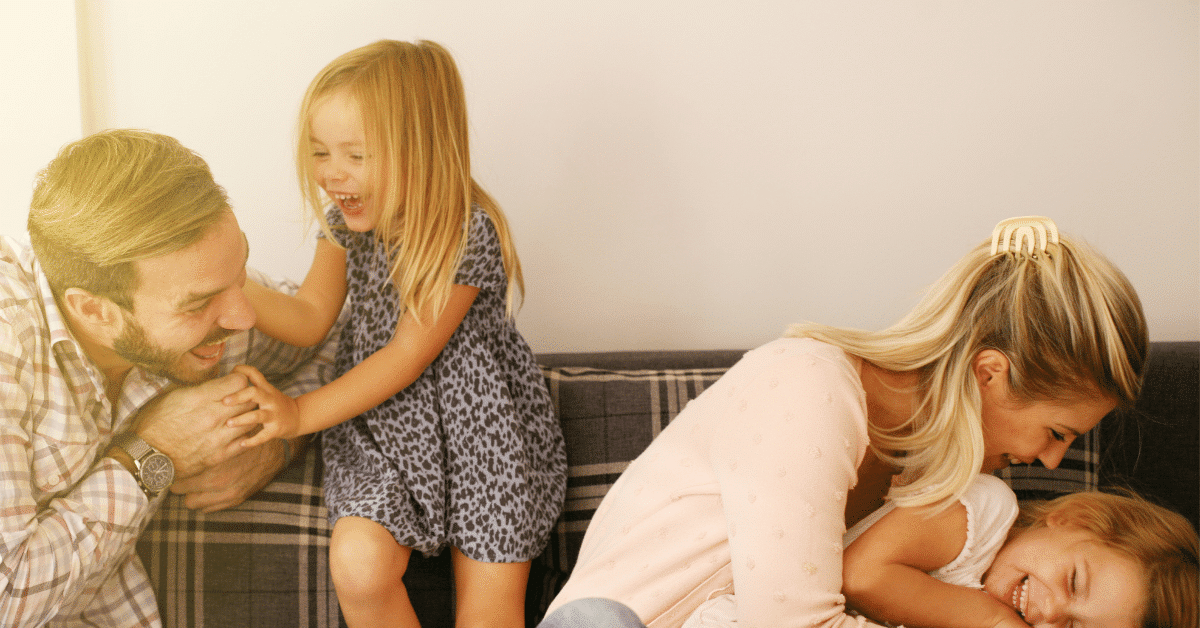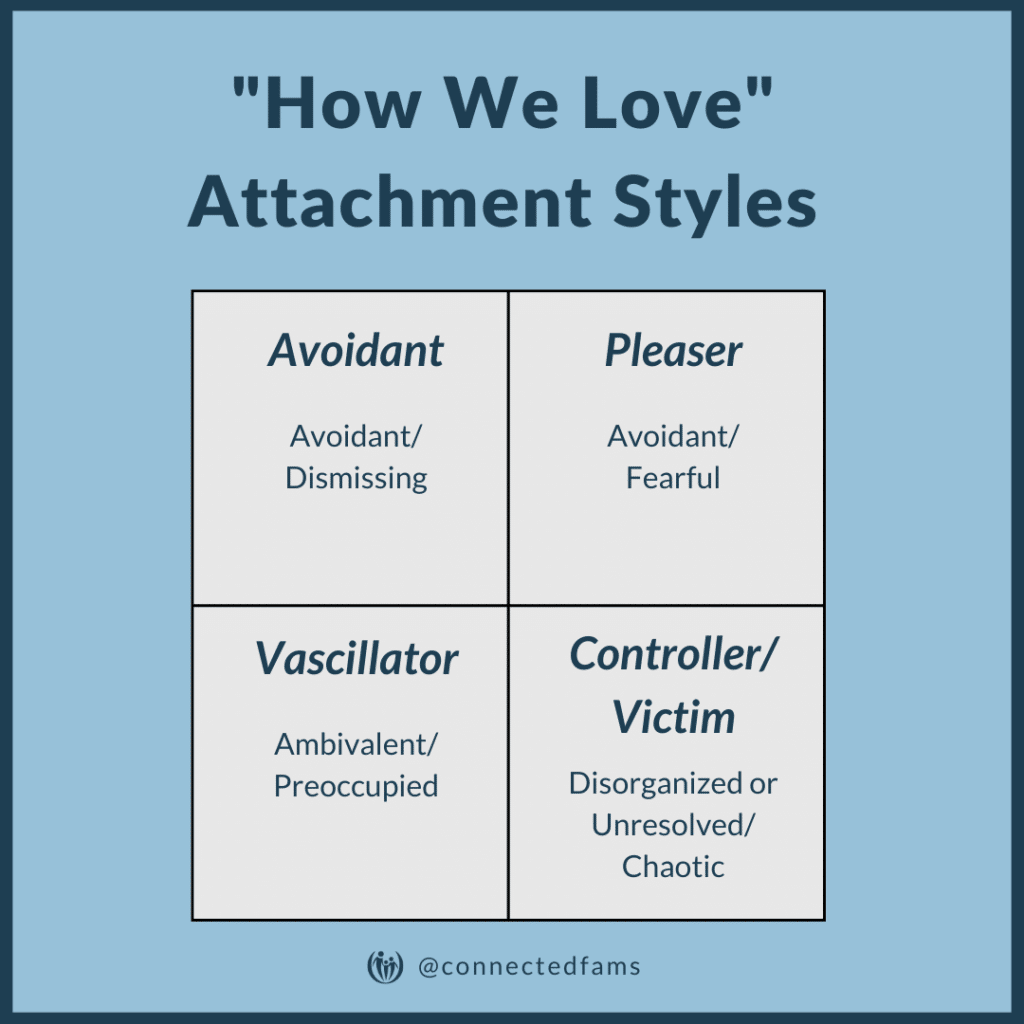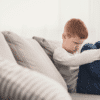
Childhood Wounds: What They Are & How To Free Your Parenting of Them

Are you struggling to experience joyful, connected, authentic relationships with your loved ones? Is it possible that childhood wounds are keeping you stuck?
Here’s a story you may relate to:
She sat right in the front row of a Connected Families parenting workshop. For the first part of the teaching, she listened wide-eyed and engaged enthusiastically.
Then things changed.
As we taught about the importance of loving and joy-filled connection, she started to avoid eye contact. She stopped talking and looked at the floor most of the time. Afterward, I (Jim) approached her and prodded, “Something changed for you. Are you OK?”
The tears formed instantly and were falling by the time she spoke:
“For the first time in my life, I’ve realized that the reason I have such a hard time connecting with my son is that no one ever really connected with me.”
How childhood wounds get in the way of parent-child attachment
It’s not uncommon for parents to struggle with actually wanting to connect with their children. There can be numerous reasons (stress, anxiety, different personalities, behavioral challenges) for this disconnection. However, we’ve found this mom’s words, “no one ever really connected with me,” to be a primary factor in what can be an ongoing challenge. In fact, a study by Hazen and Shaver suggests that a whopping 45% of adults have insecure attachment.
What is attachment theory, and what do childhood wounds have to do with it?
There are countless books written on attachment theory, and it is taught in child development courses all over the world. We’ll simplify here.
In the 1970s, a British psychologist named John Bowlby became the first attachment theorist. He was curious as to why some people flourished in healthy, secure relationships and others didn’t. He discovered that simply meeting a child’s physical needs (feeding them, for example) did not lead to a secure parent-child attachment.
He began to theorize that secure attachment had to do with how parents respond when their child is scared or anxious. Parents can use these times to become a safe haven that increases their child’s confidence and security.
When parents struggle to connect and empathize with their child during these big emotions, it can lead to childhood wounds that make attaching to other people throughout life more difficult. (If you relate to this, take a deep breath and know we’ve got a lot of hope for you and “next steps” throughout this article.)
The “Strange Situation”
Another researcher named Mary Ainsworth took Bowlby’s research and expanded upon it. She created a now-famous experiment called the “Strange Situation.”
Ainsworth recruited mothers with children between the ages of 12 and 18 months. She created a “Strange Situation” and observed the child at each of these steps:
- The mom and child were alone and together in a room.
- The child was allowed to explore the room with their mom present.
- A stranger entered the room and talked to the mom, then approached the child.
- The mom left the room.
- The mom returned and comforted her child.
She noticed that children responded to the strangeness of this situation in a variety of ways. Since this 1970’s experiment, research has discovered that the way children respond corresponds with long-term relationship patterns.
Ainsworth grouped the toddlers’ responses into the following three categories:
- Secure attachment
- Avoidant-insecure attachment (or dismissing attachment)
- Ambivalent-insecure attachment
Since that time, attachment researchers have added:
- Disorganized-insecure attachment
A brief introduction to Attachment Theory
The grid below will give you a broad overview of Attachment Theory. If you want to learn more, read this thorough Wikipedia entry.

1. Secure attachment
- Top-left of the grid
- Low anxiety, low avoidance
In secure attachment, when the mother leaves, the baby is distressed but happy when she returns and welcomes the mother’s comfort. Also, the baby is friendly toward the stranger when the mom is present but avoids them while she is gone. For the securely attached child, the parent is the secure base from which the child can safely explore the world and other people.
2. Avoidant-insecure attachment (also known as dismissing attachment)
- Bottom-left of the grid
- Low anxiety, high avoidance
- Childhood wound: Primary caregiver rejects child repeatedly or is unavailable during emotional distress
The babies with an avoidant-insecure attachment pattern tend not to explore the room, whether their mother is present or not. In fact, they also show no distress when their caregiver leaves. Instead, they mostly avoid their parent and operate independently, both physically and emotionally.
3. Ambivalent-insecure attachment (also known as anxious attachment)
- Top-right of the grid
- High anxiety, low avoidance
- Childhood wound: Primary caregiver is not dependable. The parent responds inconsistently to a child’s emotional needs, creating a situation of high anxiety.
The babies with an ambivalent attachment may be wary of the stranger, even when the mother is present, and they may be excessively distressed when she leaves. However, they don’t necessarily embrace her when she returns either. The child may not welcome the mother’s comfort, and it may take a long time to settle after her return.
4. Disorganized attachment (also known as fearful-avoidant attachment)
- Bottom-left of the grid
- High anxiety, high avoidance
- Childhood wound: The parent is a physical and/or emotional threat to the child.
The child in this category is hard to categorize. It’s the disorganization of their responses that stands out. This might look like ambivalent attachment one minute, then avoidant attachment the next. In the Strange Situation, they bounce between signs of avoidance and anxiety. This attachment style is usually the result of abuse or neglect.
Feeling discouraged? Don’t lose heart, you don’t need to be a perfect parent to have a securely attached child! Read on to learn more about healing your own childhood wounds and earned-secure attachment.
What do securely attached relationships look like?
The top left corner of the attachment graph is where all of us long to be: in securely attached relationships in which we are confident that we are worthy of love and can love others well.
The securely attached individual has low relational anxiety and low avoidance tendencies.
A securely attached child:
- can separate from the parent but is happy when the parent returns
- seeks out parents for comfort
- would rather be in parent’s company than with strangers
A securely attached adult:
- maintains trusting intimate relationships
- is able to express feelings in relationships
- has a healthy self-esteem
- seeks out support in the community
A securely attached parent:
- desires to be near their child and attend to their child’s needs, but also enjoys their child’s budding independence and encourages it
- easily notices and affirms the image of God (the God-given goodness) in their child, even while facing the messiness of daily life (Ephesians 2:10)
- doesn’t parent in isolation but draws on their community for support
If you don’t relate to this picture of a securely attached parent, or if you don’t think your child acts like a securely attached child, read on. The story isn’t over yet. Let’s get to the rest of the attachment styles.
Dysfunctional attachment: When your childhood wounds impact your parenting
In parenting, there may be a tendency to blame the lack of connection with a child on the child’s difficult behavior.
The hard truth: Your own childhood wounds may be keeping you stuck.
Parents may have difficulty acknowledging hurts and a lack of connection in their family of origin because it can be deeply painful.
But often, beneath these seemingly superficial problems, there is an intense sense of grief and loss. This is due to the unmet longing for a deep, loving connection. That connection may have been weak, unpredictable, or even absent with their childhood caregivers. Now it’s hard to create that deep and loving connection with their kids.
What unresolved childhood wounds look like
Addiction, anger, depression, overachievement and perfectionism, anxious peacekeeping, or a tendency to control can all be possible symptoms of insecure attachment. But however it shows up, the end result is stress-filled, superficial relationships.
Perhaps the most tragic part of these unresolved childhood wounds is that the wounds often reopen and fester during the stress of parenting. Your children, then, may suffer the effects of what you missed from your parents.
The one who fears is not made perfect in love. We love because He first loved us.
1 John 4:18b, 19
Parenting attachment style: An issue at your parenting foundation
At the core, attachment style is a foundational parenting issue. If you and your children are struggling with healthy attachment, it is an opportunity to strengthen your foundation. The good news is that attachment wounds can be identified, and you can grow along with your kids. There is always abundant hope in God’s grace and truth for you and your family!
The Connected Families Framework for parenting is clear. The first level of the framework says, “You are SAFE with me.” Part of creating safe, healthy, connected relationships is to ask ourselves questions like these:
- “What’s going on in me?”
- “Why did I react that way?”
- “Why do I parent the way I do?”
Some parents, like the one in the story mentioned earlier, can readily answer these questions on their own. Others need help. And some spend a lifetime trying to either compensate for this loss, protect themselves from the pain, or both.
After reading this, you may be wondering if your own attachment is secure. None of us had perfect parents. To some degree, we all have wounds, pain, and fear. Make this the day you begin to move toward freedom and health! God’s limitless love is the source of true healing.
The one who fears is not made perfect in love. We love because he first loved us. 1 John 4:18b, 19
Baby Step 1: Identify where your attachment style is dysfunctional
Most people will have some type of attachment wound. Go to the website Howwelove.com and take the Love Style Quiz,* which takes about 15 minutes. This quiz will help you key in on the dysfunctional attachment style(s) that you might default to under stress: Avoider, Pleaser, Vacillator, or Controller/Victim. “How We Love” has split the insecure attachment styles into four rather than three, but they still follow the same basic patterns.
*Warning: In order to cover the full range of situations, some of the questions in this quiz are about domestic violence.

While this quiz will show you different attachment styles that all seem negative, it’s important to view them objectively and as a useful tool to help answer the question, “What’s going on in me?”. Welcome the insight you gain as a guide to help you better understand and heal patterns of insecure attachment. The goal is earned-secure attachment.
Baby Step 2: Invest in healing your childhood wounds and fostering healthy attachment in your kids
If you want to know more, you can buy the book How We Love Our Kids to understand the way your love style impacts your parenting. Throughout the book, you’ll uncover areas for potential growth. Be encouraged: we’ve seen many parents grow in emotional health and secure attachment, as they are a channel of God’s love and grace to their kids.
Podcast Episode 101: Does Attachment Style Matter?
Check out Episode 101 of the Connected Families Podcast as we interview Milan and Kay Yerkovich, “Does Attachment Style Matter?”
BIG Step 3: Ask for help!
If you continue to feel stuck, seek help! A therapist can help you develop a secure attachment style, even if your parents are no longer living or you’ve lost all contact. Search for a therapist that uses attachment theory and a development model (history influences present-day behavior) in their practice.
Kay Yerkovich (co-author of How We Love Our Kids) has generously provided some extra resources to help you in your journey:
It can be a scary journey, but you and your kids are worth it! Begin the journey of healing from your childhood wounds and develop better connection not only with your children but in all your most important relationships.

Stop believing lies.
About you. Or your kids.
Learn to approach motherhood with grace and truth. Take the Grace & Truth for Moms small group course.







